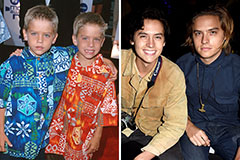Throughout the captivating and typically uncertain entire world of specialist wrestling, championship belts hold a relevance that transcends plain embellishment. They are the supreme icons of success, effort, and supremacy within the settled circle. Among the most respected and historically abundant titles in the industry are the WWF Champion Belts, a family tree that dates back to the really foundation of what is currently called copyright. These belts have not just stood for the pinnacle of battling prowess but have actually likewise advanced in style and meaning together with the promo itself, ending up being iconic artifacts cherished by fans worldwide.
The journey of the WWF Championship started in 1963 when the World Wide Wrestling Federation (WWWF), the forerunner to the WWF and at some point copyright, was created. Adhering to a disagreement with the National Fumbling Alliance (NWA), Northeast promoters developed their own banner and identified Buddy Rogers as their inaugural WWWF Globe Heavyweight Champ on April 25, 1963. Remarkably, some accounts recommend that Rogers was awarded the WWWF title belt, which was an old United States title he already had, as a placeholder up until a brand-new layout could be produced.
Throughout the WWWF period (1963-1979), the champion belt went through several iterations, frequently coinciding with the periods of its most prominent owners. Bruno Sammartino, the legendary "Living Tale," held the title for an impressive mixed overall of over 4,000 days across two powers. During his time, different designs were seen, including one formed like the contiguous United States, highlighting the local origins of the promotion. Later, a more traditional design featuring two wrestlers grappling over an eagle became synonymous with Sammartino's 2nd regime and the champions who followed him, such as "Superstar" Billy Graham and Bob Backlund.
The year 1979 marked a considerable change as the WWWF formally ended up being the World Fumbling Federation (WWF). This rebranding would at some point cause changes in the champion's name and look. In the early 1980s, as the WWF began its ascent towards coming to be a global phenomenon, a bigger, eco-friendly leather belt with giant gold plates was presented. This layout included a wrestler holding a champion with the world behind him, absolutely proclaiming the holder as the " Globe Champ." Especially, the side plates of this version listed the family tree of previous champions, a practice that acknowledged the title's abundant background. This renowned belt was held by numbers like Bob Backlund, The Iron Sheik, and, most notoriously, Hulk Hogan, who carried it throughout the "Hulkamania" era, a period of extraordinary mainstream success for the WWF.
The mid to late 1980s saw the intro of what numerous take into consideration among the most cherished styles in wrestling background: the "Winged Eagle" championship. Debuting in very early 1988, with Hulk Hogan as the first owner, this design included a magnificent eagle with outstretched wings as the focal point, flanked by smaller side plates. The "Winged Eagle" belt came to be a symbol of excellence throughout the late 1980s "Rock 'n' Wrestling" age and well right into the 1990s " Brand-new Generation" era. Famous champions such as Randy Savage, The Ultimate Warrior, Bret " Hit Man" Hart, and Shawn Michaels all happily held this variation of the title. The "Winged Eagle" even transitioned right into the very early years of the "Attitude Period," with " Rock Cold" Steve Austin being the last permanent champion to use it.
The " Perspective Period," which blew up in popularity in the late 1990s, brought with it a much more aggressive and edgy aesthetic, reflected in the WWF Champion design. In late 1998, the " Large Eagle" belt was introduced. This layout featured a bigger main plate with a famous WWF " scrape" logo, representing the business's contemporary identity. While keeping a feeling of reputation, the " Huge Eagle" layout aligned with the rebellious spirit of the period and was held by epic figures like " Rock Cold" Steve Austin, The Rock, and Mick Foley.
As the schedule turned to the new centuries, the WWF underwent another improvement, ending up being Entire world Wrestling Amusement (copyright) in 2002. This period additionally saw the unification of the WWF Champion with the copyright Championship ( obtained after copyright's acquisition of World Championship Wrestling). The " Indisputable" championship was stood for by both the " Large Eagle" and the copyright's "Big Gold Belt" being held all at once. This unification was brief, as the re-established copyright divided its roster into two brands, Raw and copyright, causing the production of a brand-new Whole world Heavyweight Champion for the Raw brand, while the original title came to be unique to copyright and was renamed the copyright Champion.
Since then, the copyright Champion has actually continued to develop in name and layout. In the mid-2000s, John Cena introduced the "Spinner" belt, a controversial yet without a doubt attention-grabbing style including a huge copyright logo design that can rotate. This reflected Cena's persona and interest a younger target market. Succeeding layouts have actually aimed to blend modern-day looks with a sense of background and stature.
Recently, particularly since April 2022, the copyright Championship has actually been safeguarded alongside the copyright Universal Champion as the Indisputable copyright Universal Championship, though both titles maintained their specific lineages. Originally stood for by both belts, a solitary, unified style ultimately emerged, adorned with black rubies and the holder's custom side plates. Since April 13, 2025, Cody Rhodes holds the Undeniable copyright Champion, having unified it after beating Roman Reigns at copyright XL in 2024. Following his triumph, copyright officially renamed the linked title to the Undeniable copyright Championship.
The WWF Championship Belts, throughout their numerous iterations, have actually functioned as more than simply rewards. They represent traditions, eras, and the numerous tales informed within the fumbling ring. Each layout is intrinsically connected to the champions that held them and the durations they specified. From the traditional majesty of the "Winged Eagle" to the strong statement of the "Spinner" and the existing unified design, these belts are substantial pieces of wrestling background, promptly identifiable icons of greatness wwf belts on the planet of professional wrestling. Their evolution mirrors the advancement of the company itself, regularly adapting to the times while for life recognizing the rich practice upon which they were constructed.
 Barret Oliver Then & Now!
Barret Oliver Then & Now! Dylan and Cole Sprouse Then & Now!
Dylan and Cole Sprouse Then & Now! Joseph Mazzello Then & Now!
Joseph Mazzello Then & Now! Michael C. Maronna Then & Now!
Michael C. Maronna Then & Now! Nicholle Tom Then & Now!
Nicholle Tom Then & Now!